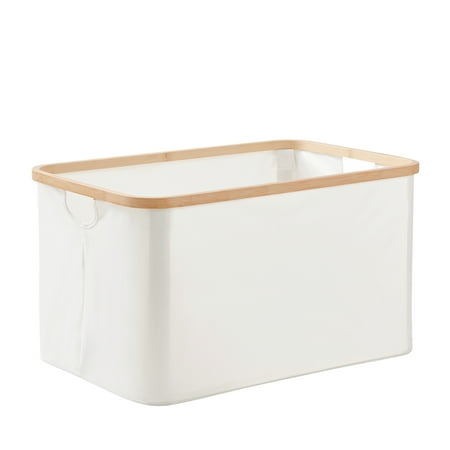I've used a dryer once in my life and have become an expert on how to dry clothes indoors in winter without musty smells, mold, or long drying times
These two essentials are all I need in winter


I have never owned a clothes dryer. It wasn’t something my parents ever needed when I was growing up, and living without one has been my norm. In fact, I've used a dryer only once in 24 years.
As a result, I have become an expert at drying clothes indoors in winter. I've learned through many years of trial and error how to avoid musty odors and clothes that stay damp indoors for days.
Now, I have achieved the perfect setup to dry clothes indoors in winter, with just a few smart investments, and it costs far less than one of the best clothes dryers.
How to dry clothes indoors in winter perfectly
While it is possible to dry laundry outside in winter, you don’t reap the same benefits of air-drying laundry as in spring and summer. Hanging outside is my preferred method to dry clothes quickly, but it gets so cold and wet in winter where I live in the UK that it isn’t worth running in and out to save fresh washing from the unpredictable rain.
Instead, I rely on two trusty laundry room essentials – a large clothes drying rack, and the best dehumidifier, such as the top-rated Amazon Basics 50-Pint Dehumidifier to negate any risks of drying clothes indoors, like mold and increased humidity.
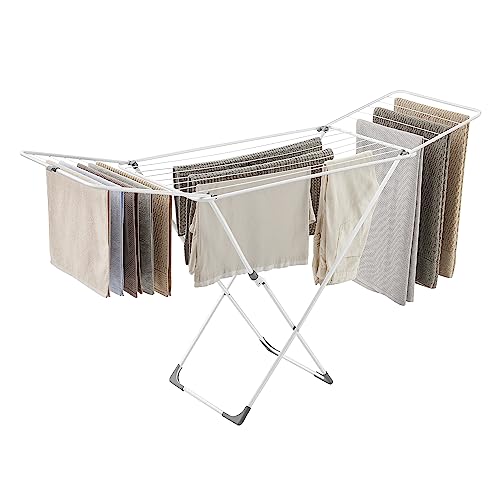
Almost identical to mine, this extra large clothes drying rack is perfect for drying lots of clothing at once indoors in winter.
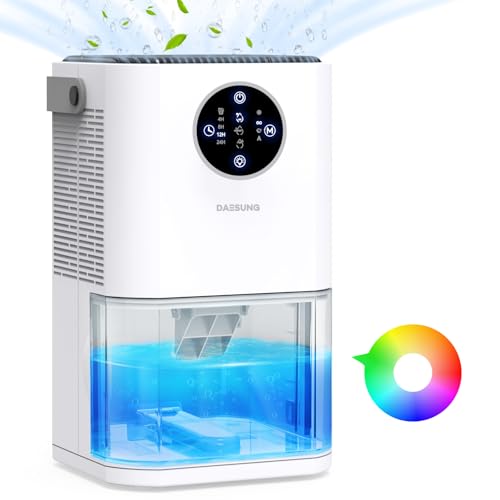
This smaller, budget-friendly dehumidifier is a great option when you only need to air dry laundry indoors on occasion.
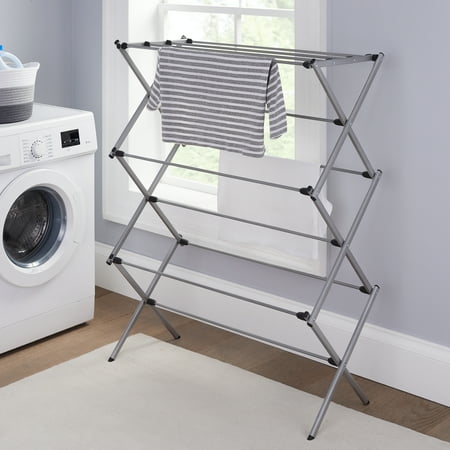
If you need to dry clothes on a smaller floor footprint, this concertina drying rack is perfect for compact spaces. Be sure not to stuff too many items on it however, as it can slow the drying process.
1. Finish laundry with a spin and drain cycle
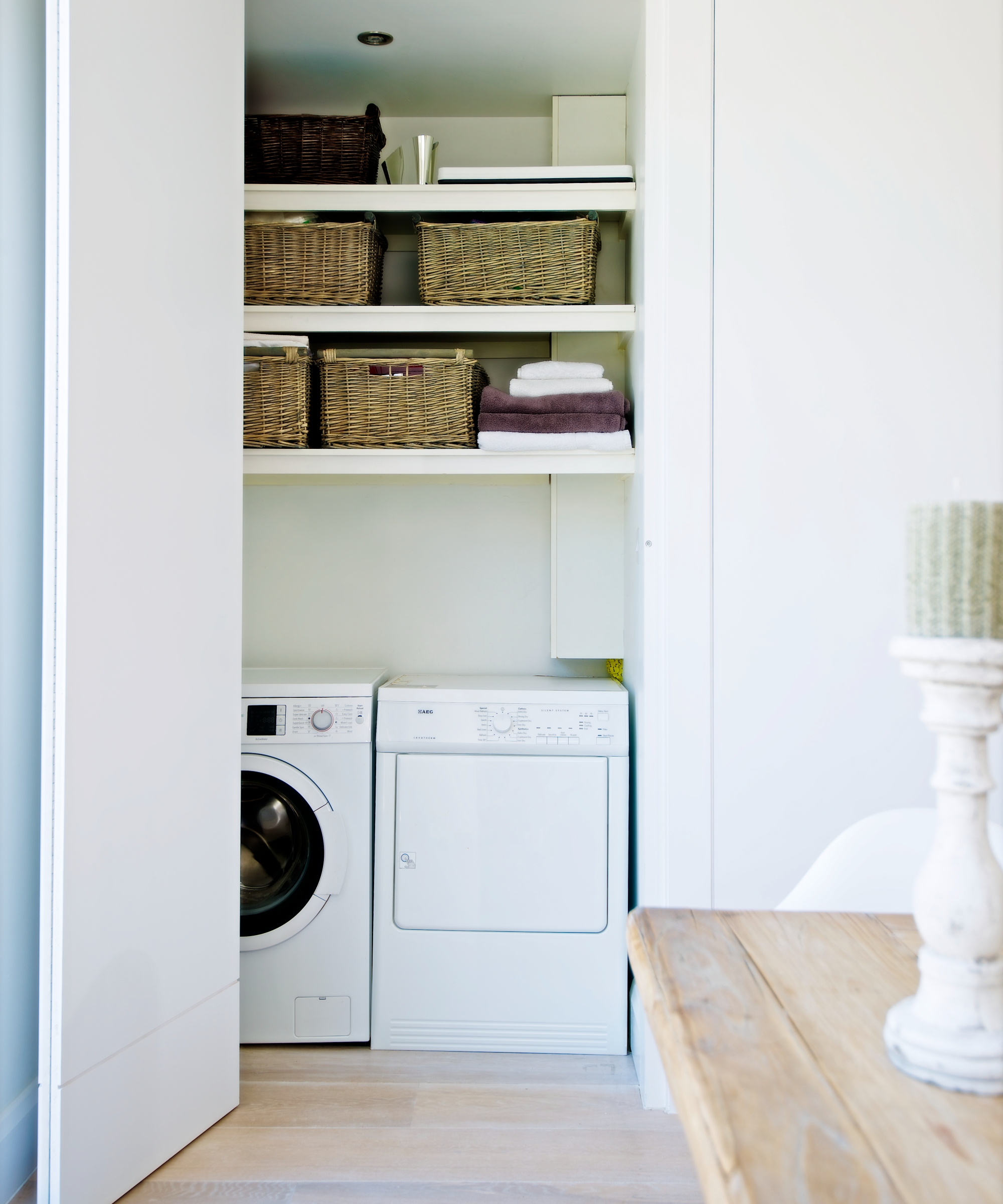
I start by doing laundry as normal, using the same detergents and wash cycles as I always do, remembering to follow the laundry symbols on the care tags.
Before removing my clothes from the machine, I always run an extra spin and drain cycle to pull as much excess water out of the laundry as possible before hanging it to dry. We have an essential guide to washing machine settings if you need to familiarize yourself with your machine's capabilities.
Design expertise in your inbox – from inspiring decorating ideas and beautiful celebrity homes to practical gardening advice and shopping round-ups.
Afterwards, I empty the laundry out and haul it up to my home office. I am constantly faced with the challenge of trying to dry clothes in a small space, and this room is the best place to keep the drying rack out of the way. It is also one of the smaller rooms in my house, so it heats up more quickly, speeding up the drying process.
Remember to leave your washing machine door open between cycles to prevent mold growth on the seals.
2. Get your dehumidifier placement right
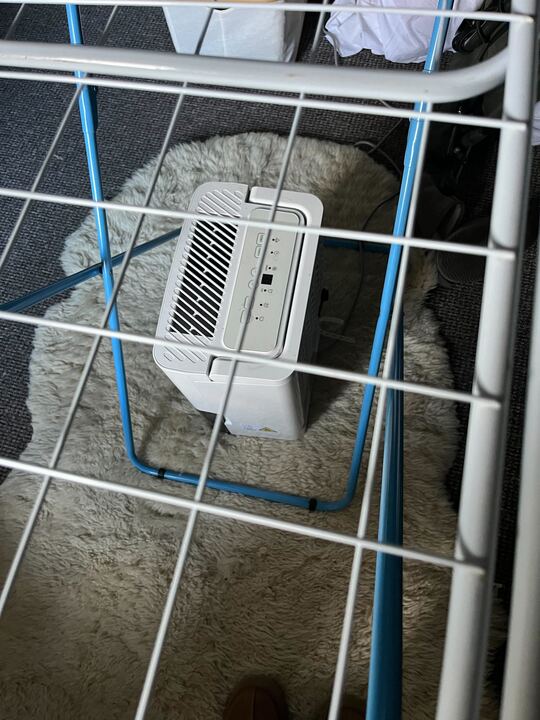
Here’s the most important laundry tip for drying clothes indoors in winter – the best place to put a dehumidifier to dry clothes is underneath the drying rack. This way, when you hang items on the rack, dry air is blown up over them, drying them out quickly and preventing musty odors and lingering dampness. I also get the added benefit of having the fresh smell of laundry being blown around my house, making my home smell nice at the same time.
3. Don’t stuff too many clothes together
Drying racks often offer a little less space to dry clothing than a tumble dryer or an outdoor clothesline, but resist stuffing your clothing too close together. You need some gaps to allow for good airflow, even with the dehumidifier below, or else your clothes will take too long to dry and risk smelling or even going moldy.
When I need to dry a lot of laundry in one go, I try to alternate thicker pieces of clothing with thinner garments to stop things from touching. More often than not, though, I will run a slightly smaller cycle to ensure everything fits on.
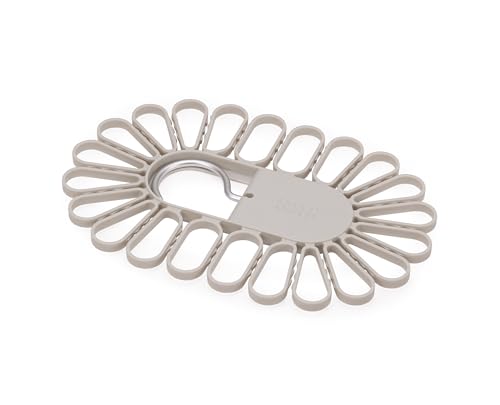
Head of Solved, Punteha van Terheyden swears by this. She says, 'I use this on sock-and -underwear-heavy drying sessions as it takes up one rail instead of three or four. When you're done, fold down the hanger heads and store away.'
4. Keep the room warm

Technically, the only thing you need to get clothes dry or to dry a duvet without a dryer is constantly moving air (which is why you can still dry laundry outside on cold or cloudy days so long as it is windy), however, it certainly helps if the room is warm when drying laundry inside in winter.
There are several ways to make your heating more efficient. To dry clothes indoors in colder times of the year, I check to make sure there is nothing blocking my radiator and close the room door to keep heat trapped. With the dehumidifier running, the room heats up more quickly, and I don’t need to worry about mold growth.
You might want to play around with arranging a room to maximize heat and cut energy bills when drying laundry inside.
5. Remove items as they dry
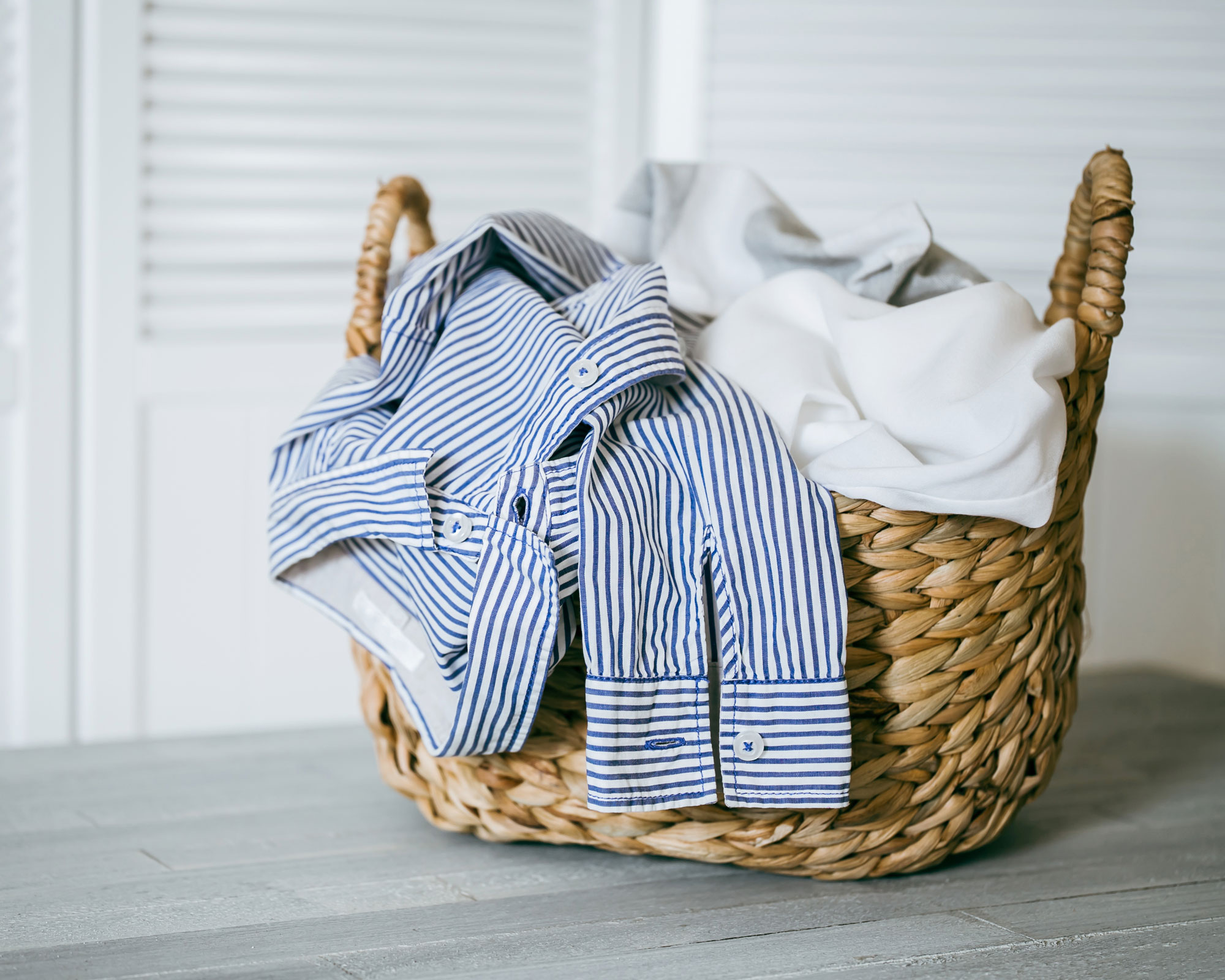
This is not something I do religiously, but whenever I am in the office or passing by, I will give the items on the dryer a quick squeeze. I anything is already fully dry, I will take it off and put it away to give the thicker, damper items more room to breathe and dry.
When everything is dry, it is folded away and the clothes rack is stowed to one side ready for the next laundry load.
Only putting laundry away when it's fully dry is one thing people with nice smelling closets always do.
Drying clothes indoors in winter without a dehumidifier
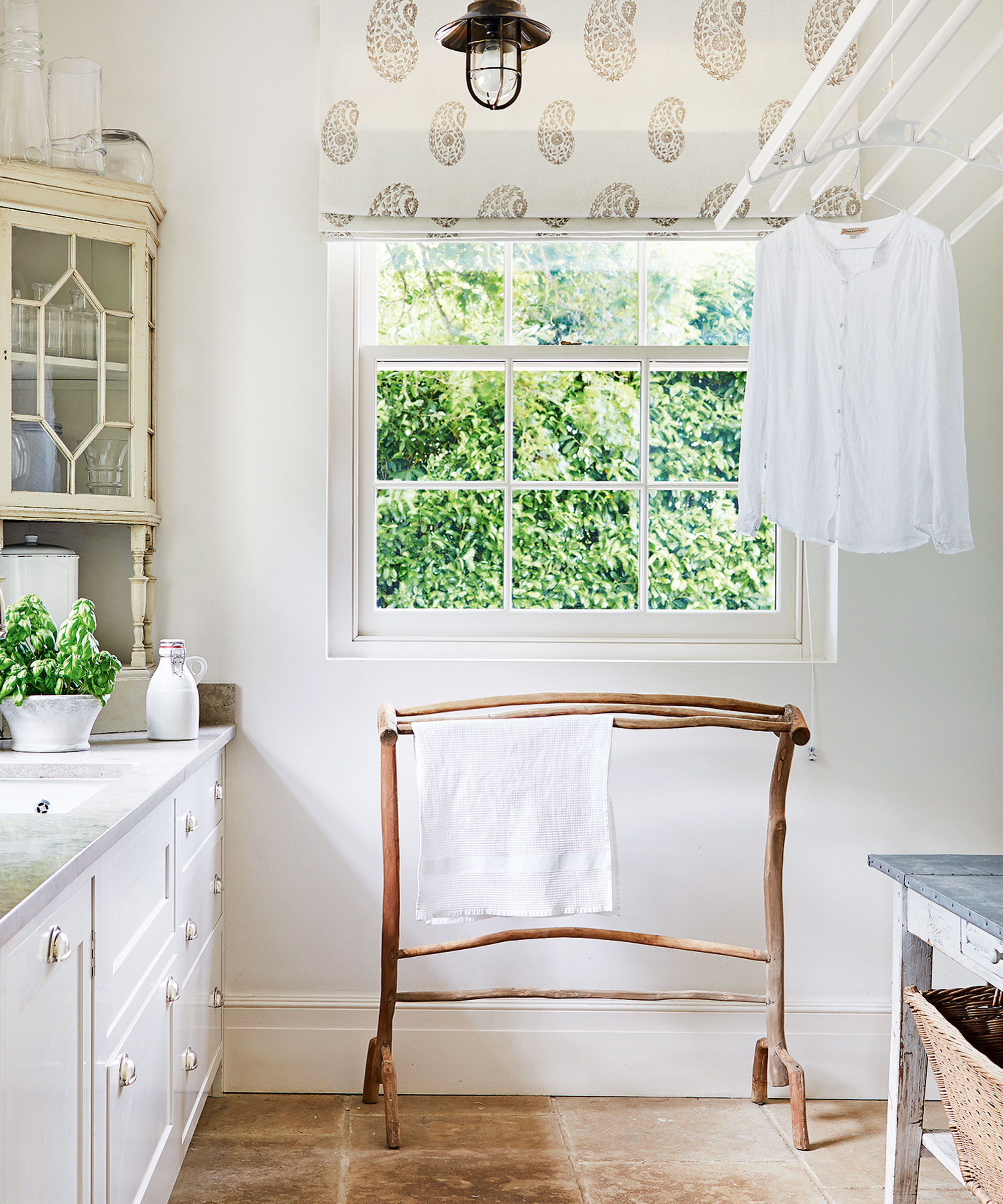
I rely very heavily on my dehumidifier to dry clothes quickly while minimizing the cons of drying clothes indoors. While it certainly makes it a lot easier and is worth the investment in my opinion (I also use it in summer to reduce oppressive humidity to feel cooler and dry clothes during summer storms) there are ways to dry clothes indoors in winter without one.
The main way is to maximize airflow. This means leaving larger gaps between clothes for better ventilation and leaving internal doors open to allow moisture to escape.
Where possible, place your laundry closer to heat sources such as radiators and heat vents, being careful not to block them entirely. You can also consider using a heated clothes airer, available at Amazon, covering your laundry with a large dry sheet to trap heat for a heated airer trick to dry clothes in half the time.
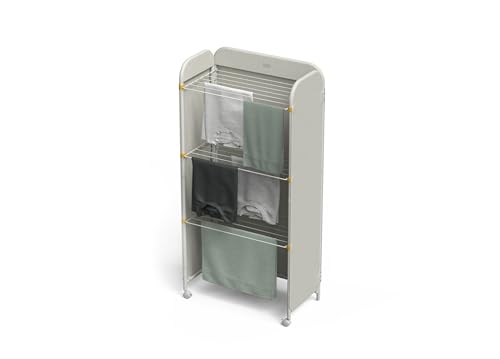
If you want to, or need to dry your clothes indoor in winter but hate the way it looks, this small footprint airer has a discreet screen on three sides to shield your clothes from view without obstructing air flow. Face the clothes to a radiator for quicker drying. H&G writer, Ottilie, tried this out in her tiny home and loved it.
Drying clothes this way rather than using a dryer might seem like a faff, but it is a great way to save energy when doing laundry – saving money too. I also never have to worry about the things you should never put in a dryer, so nothing is shrunk or stretched, prolonging the lifespan of my clothes.

Chiana has been at Homes & Gardens for two years and is our resident 'queen' of non-toxic living. She spends most of her time producing content for the Solved section of the website, helping readers get the most out of their homes through clever decluttering, cleaning, and tidying tips. She was named one of Fixr's top home improvement journalists in 2024.
